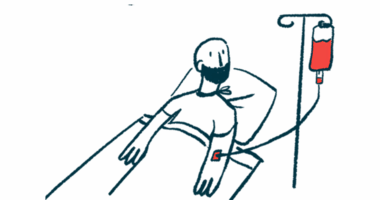Obesity Likely Factor in Joint Bleeds and Pain in Hemophilia, Experts Say in US Survey

Obesity increases the frequency of joint bleeds and degree of pain, and lowers overall life quality of people with hemophilia in the United States, most healthcare providers agreed in an online survey.
But a sizable number, about 40%, did not discuss weight with patients during care visits, largely due to time constraints and other priorities. They argue that more resources are needed to help obese and overweight patients lose weight.
The study, “Awareness, Care and Treatment In Obesity maNagement to inform Haemophilia Obesity Patient Empowerment (ACTION‐TO‐HOPE): Results of a survey of US haemophilia treatment centre professionals,” was published in the journal Haemophilia.
Statistics indicate that 18‐36% of adults and 17‐22% of children with hemophilia in the U.S. are obese.
Evidence of a link between obesity and a greater risk of spontaneous bleeds in patients with hemophilia is not clear, but some smaller studies report benefit from reduced joint bleeds after losing weight. A need exists for more information that can guide clinical care and support strategies for weight management at specialized treatment centers.
Researchers set up an online survey study to gather the opinions of healthcare providers working at hemophilia treatment centers regarding the challenges faced by patients who are obese or overweight.
Their ACTION‐TO‐HOPE study (for Awareness, Care and Treatment In Obesity maNagement to inform Haemophilia Obesity Patient Empowerment) gathered survey responses from 10 hematologists, 29 pediatric hematologists, 16 nurses, 11 nurse practitioners/physician assistants, 22 physical therapists, and 17 social workers between November 2017 and April 2018.
Almost all of these respondents — 94%— thought losing weight would help lower the number of joint bleeds these patients experience, 89% thought it would help with pain, and 88% thought it could improve mobility. Of them, 59% said they discussed the impact of excess weight on health and 69% spoke of it in relation to joint health during patient visits.
These professionals perceived fewer than 50% of their patients to be either overweight or obese, with the largest proportion of these people — 23% — being overweight (a body mass index or BMI of 25 to 29.9 is overweight; a BMI of 30 or above is defined as obese).
Most reported having calculated their patients’ BMI, but only 24% consistently reported BMI back to patients or their parents.
Common recommendations for weight loss were for patients to be more physically active (done at 67% of care visits), followed by a stress on better eating habits (at 55% of visits). Prescription or over-the-counter weight reduction drugs were the least favored options by respondents, largely because of a perceived risk of side effects when used with disease treatments.
The researchers noted that only 69% of those surveyed reported that patients would require less treatment factor if they lost weight, possibly because they “think that doses may already have been adjusted to ideal body weight,” they wrote.
Excessive, but commonly available, food portions and unhealthy food choices were seen by 89% of healthcare professionals as the top reasons for excessive weight and obesity in patients. Other reasons frequently mentioned included lack of physical activity (by 88%), overeating (by 86%), and increasing time spent on digital entertainment (by 83%).
Most providers, 73%, said their patients often failed to see a connection between their body weight and disease outcomes, which created a barrier to discussion.
Almost three quarters of these professional (72%) noted that patients’ limited physical activity was due to the risk of joint bleeds, and this risk was a factor that also influenced BMI. Many also noted joint stiffness in patients.
Indeed, fear of joint bleeds or joint pain due to exercise were often seen as impediments to starting and maintaining weight loss. A desire to ease joint pain and joint disease progression, and to lessen the risk of frequent joint bleeds, were reported as the main motivations for obese patients to lose weight.
Healthcare providers estimated that only 15% of their patients had tried to lose weight during the previous year, and only 18% of them succeeded.
“Although many HCPs [healthcare providers] believe that it is their responsibility to assist PwHO [obese hemophilia patients] with their weight‐loss efforts and that obesity affects their patients’ quality of life as much as haemophilia,” the study noted, “they report that comprehensive care visits are too short to address obesity, and other priorities often take precedence during 2‐ to 4‐hour comprehensive annual visits.”
Most respondents (84%) believe that better collaboration between hemophilia treatment centers and weight management experts, whose offering could include physical activity programs or dietitian appointments, would be the most effective way of achieving sustained weight loss in PwHO.
“The content of weight‐loss discussions with patients is very important. In addition to informing a patient of the need to lose weight, HCPs must also discuss how to effectively lose weight and how the HTC [hemophilia treatment centers] through its staff or referrals will help support weight management efforts,” the researchers wrote.
Healthcare professionals also expressed the desire to have access to additional education and materials to better understand and support weight management for obese and overweight patients.
“HCPs desire additional education/materials to manage PwHO, which would support their efforts to build referral relationships with weight management centres and partnerships to implement comprehensive management plans for addressing obesity and haemophilia,” the investigators concluded.






